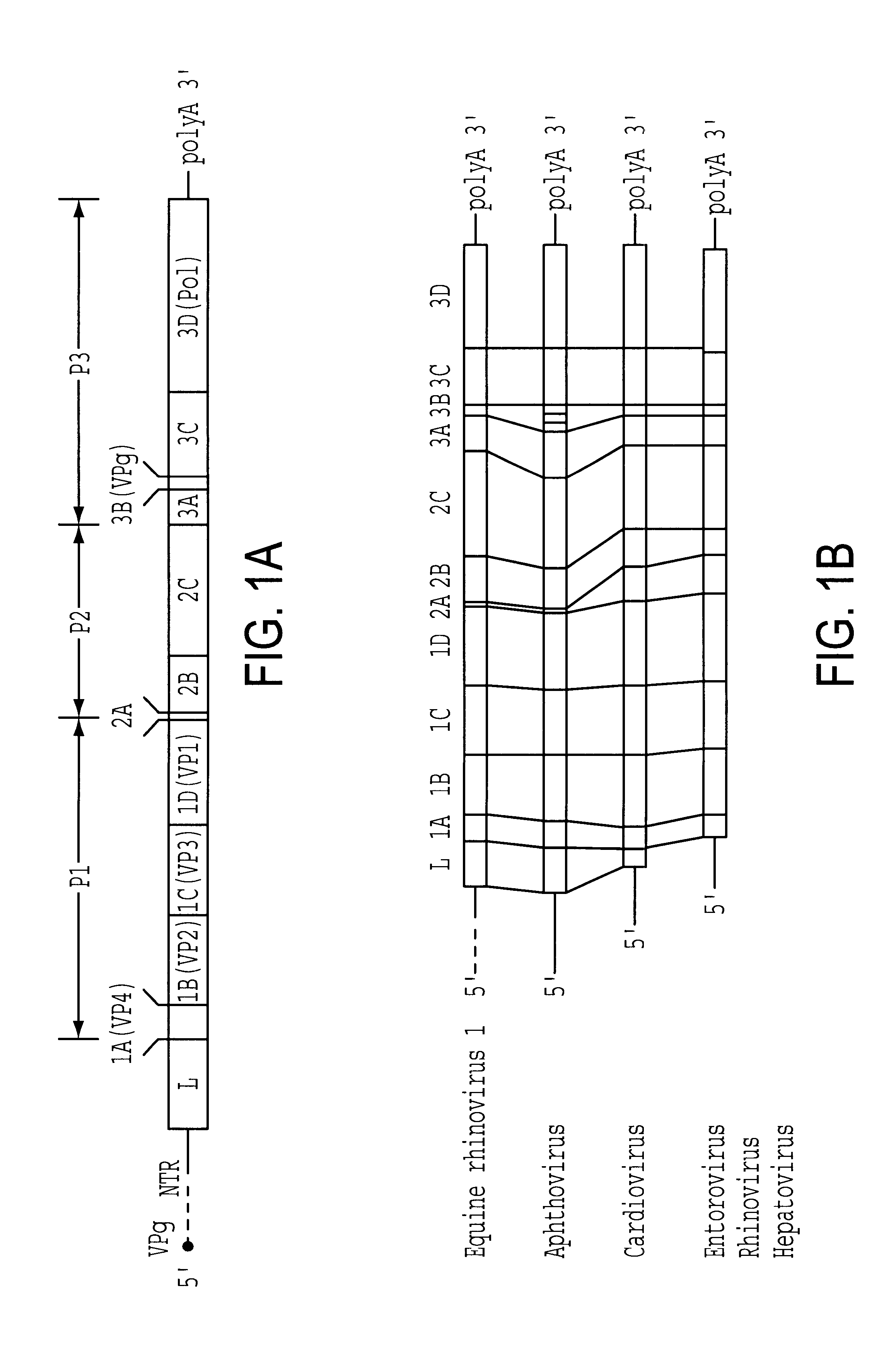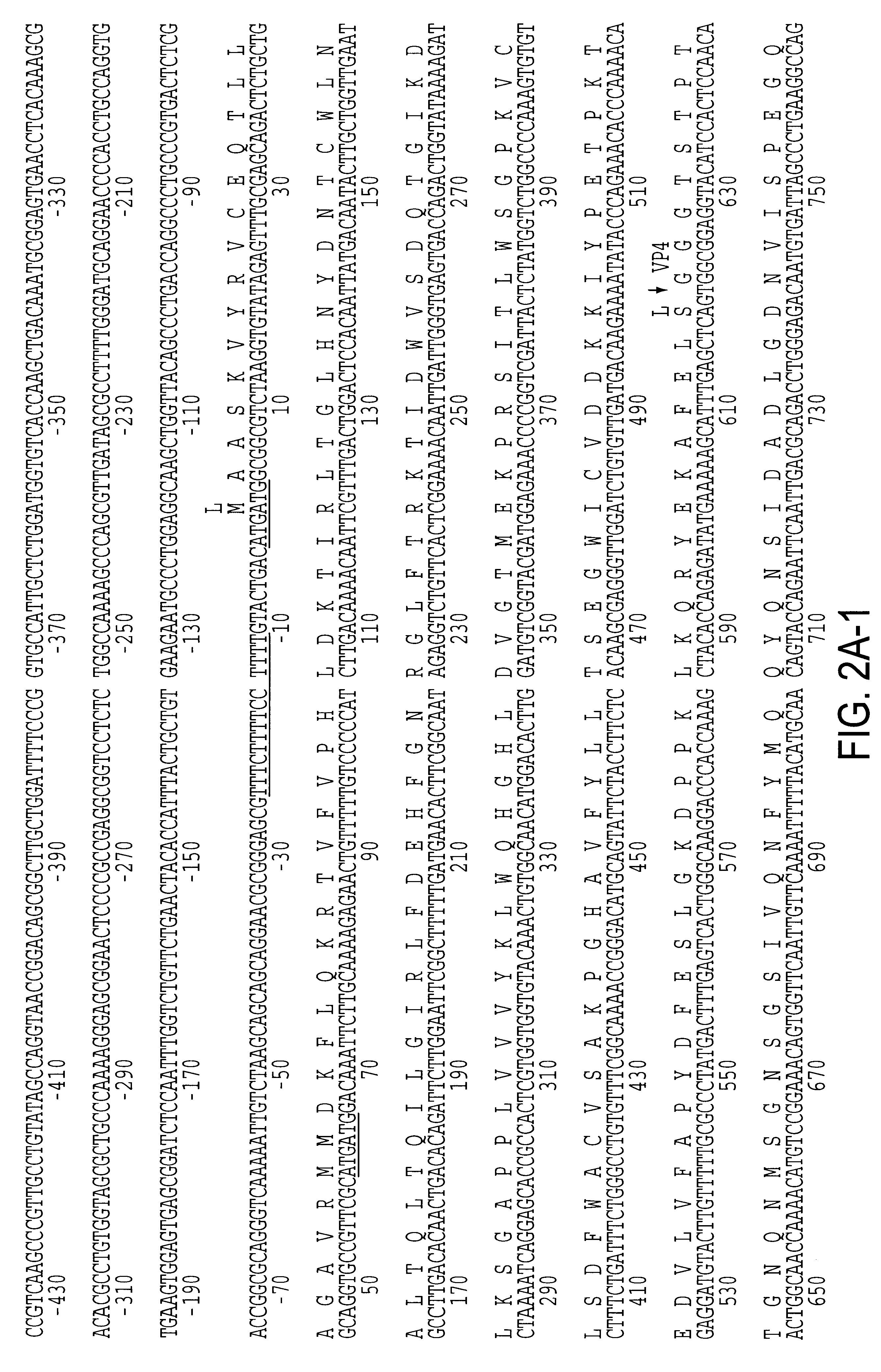Equine rhinovirus 1 proteins
a technology of equine rhinovirus and protein sequence, which is applied in the field of nucleotide and protein sequence, can solve the problems of difficult primary isolation of erhv1 from clinical specimens, limited analysis, and small number of reported isolations of erhv1
- Summary
- Abstract
- Description
- Claims
- Application Information
AI Technical Summary
Problems solved by technology
Method used
Image
Examples
Embodiment Construction
The sequence of specific oligonucleotide primers used for the construction of expression plasmids are:
Virus growth and purification
ERhV1 strain 393 / 76 was isolated from a nasal swab taken from a thoroughbred horse in South Australia while it was being held in quarantine following importation from the United Kingdom. The mare had an acute, systemic febrile illness. The virus was passaged 14 times in quine fetal kidney (EFK) monolayer cell cultures and then once in Vero cells. ERhV1 virions were purified by a modification of the procedure described by Abraham and Colonno. Cells were harvested 48 hours after infection. The infected cells and supernatant fluid were frozen and thawed three times and clarified by centrifuging at 2,000.times. g for 20 min at 4 C. Polyethylene glycol 6000 and NaCl were added to the supernatant to final concentrations of 7% and 380 mM, respectively, and the mixture was stirred overnight at 4 C. The precipitated virions were recovered by centrifuging at 10,00...
PUM
| Property | Measurement | Unit |
|---|---|---|
| volume | aaaaa | aaaaa |
| size | aaaaa | aaaaa |
| morphology | aaaaa | aaaaa |
Abstract
Description
Claims
Application Information
 Login to View More
Login to View More - R&D
- Intellectual Property
- Life Sciences
- Materials
- Tech Scout
- Unparalleled Data Quality
- Higher Quality Content
- 60% Fewer Hallucinations
Browse by: Latest US Patents, China's latest patents, Technical Efficacy Thesaurus, Application Domain, Technology Topic, Popular Technical Reports.
© 2025 PatSnap. All rights reserved.Legal|Privacy policy|Modern Slavery Act Transparency Statement|Sitemap|About US| Contact US: help@patsnap.com



